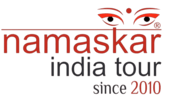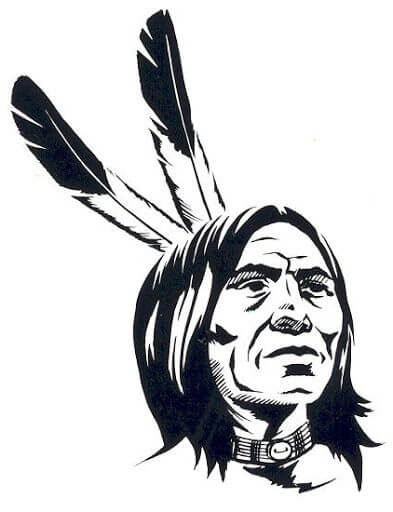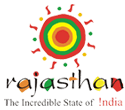- Home
- Holiday Ideas
-
-
- Choose Your Traveling Theme
-
- Adventure Tourism
-
- Cultural Tourism
-
- Tour Packages
-
-
- Packages by State
-
- Holidays by Interest
-
- Popular Tour Packages
-
- Fair And Festivals
-
- Ayurveda And Yoga
-
- Offers
-
- Destinations
-
North-East India Tribal Tour Packages
 North-East India Tribal Tour Packages
North-East India Tribal Tour Packages
India’s Northeast area is an immaculate domain, which is yet not explored totally. Decorated with majestic mountains, lush green vegetation, and wild rivers, the region comprises of an outsized number of tribal groups and tribes. Be that as it may, each tribal group its own particular culture and communicate in various dialects.



-
1
Day 1: Arrive Kolkata
On arrival at Kolkata International airport meet our representative and transfer to the hotel. Enjoy an evening occupy the hotel.
-
2
Day 2: Kolkata - Dibrugarh
The next day within the morning we’ll transfer to the airport to board the flight for Dibrugarh, the gateway to the “Hidden Land” of Eastern Arunachal Pradesh. On arrival at Dibrugarh airport meet our representative and transfer to the hotel. After fresh-n-up have a pleasing walk alongside a river bank or explore the nearby market. An overnight occupies the hotel.
-
3
Day 3: Dibrugarh - Digboi
After breakfast, we’ll leave for Digboi. On the way, we’ll visit the Namphake Village. The Village was built up in 1850 AD by 600 people from the Phakial people group in Namphake. The villagers have maintained their culture and preserved the century-old traditions to contribute to the popularity of the Assamese culture. The villagers here are Buddhist by religion. Here, we’ll also visit the Namphake monastery.
Further, we’ll visit the Bell Temple. Here, you’ll find many big and little bells engaged to the poles, walls, and trees within the temple-yard because it may be a belief that if your wish is granted once you visit this temple for the primary time, one can tie a bell within the temple-yard as testimony.
Later, check the Eco resort/homestay for an overnight stay.
-
4
Day 4: Digboi - Mon
After breakfast, we’ll leave for Mon. Mon itself may be a district within the Nagaland State and is situated at an altitude of 898 meters. it’s the house of the Konyak Nagas. Here, you’ll see the people with tattooed faces and wearing feathers. The natives are adept artisans and skilled craftsmen. In Mon you’ll be impressed by the superb wood carvings. The fare of Aoling Monyu is one of the famous festivals of Mon which is widely known within the first week of April every year. During celebrations, the males wear bright wraps and headgear brightened with plumes and hit the dance floor with daos or lances reciting musically. The Dynasty of Konyaks was ruled by hereditary chiefs referred to as Anghs. The Angh’s home is the most important within the village with a display of skulls within the front. Later, transfer to the guest house. An overnight stay on Mon.
-
5
Day 5: Mon - Shangnyu villag - Mon
Today, we’ll have a full day excursion to Shangnyu village. The tradition is seen here where people are as yet not contacted by modern ways. It the prominent village within the Mon district and ruled by its chief Angh. Here we’ll meet with village folk and see their way of life. we’ll also visit the Angh’s Palace, 8 feet tall and 12 feet in width – believed to be constructed by heavenly angels. Carvings of the citizenry and other creatures are engraved on this monument. Later return to Mon for overnight stay.
-
6
Day 6: Mon - Mokokchung
After breakfast, we’ll leave for Mokokchung – the house of the Ao Naga tribe. The district of Mokokchung is entirely inhabited by this tribe. it’s the cultural nerve center of the tribe and is economically and politically the foremost important urban center in northern Nagaland. Chuchuyimlang is that the village of festivals for the Ao Nagas. The Moatsu festival, supported community bonding, takes place here from the primary of May till the third. During this era, the villagers expressed their friendship towards villagers by exchanging gifts making new alliances, renewing old ties, etc. On arrival, check the guest’s house. Enjoy an overnight stay in Mokokchung.
-
7
Day 7: Mokokchung - Ungma - Longkhum - Tuophema
Today, we’ll have an excursion to Ungma and Longkhum villages followed by a drive to Tuophema. Longkhum: The village is understood for scenic beauty. During springs, the Rhododendrons adorn the hillocks and its surroundings, providing an astounding sight fully bloom. consistent with an old Naga, “a single visit to Longkhum isn’t enough, for your soul stays behind the primary time and you’ve got to return there once for more to urge it back”. This saying springs from the very fact. Here one will have the prospect to go to its exquisite ethnic handlooms & handicrafts.
Ungma: this is often the oldest and therefore the largest of all the Ao villages and the second largest village on Nagal. Located about 3 km from Mokokchung Town, Ungma occupies a singular position within the history of the Ao Nagas, for it’s said that the entire Ao tribe founded this village once they first entered the land from their ancestral Home at Chungliyimti. The place is taken into account to be a living museum of the traditions of the tribe. Further, we’ll drive to Tuophema village. On arrival, check the ethnic tourist cottages inbuilt the Angami Naga style. An overnight occupies Touphema.
-
8
Day 8: Touphema - Khonoma village - Kohima
This morning, we’ll choose a full-day excursion to the nearby enchanting places. we’ll start with the visit to the Touphema village. The village features a conserved area where one can trek and obtain an exhilarating experience. The Angami Sekrenyi festival a festival of purification is widely known here between 25-27 February of each year. it’s believed that the purified water washes away the diseases and misfortunes.
Further, we’ll drive to Khonoma village, an area renowned for its valor and courage. The Khonoma entryway recounts to the account of British penetration into Naga Hills. Within the evening, return to Kohima the capital city of State Nagaland for an evening stay.
-
9
Day 9: Kohima
Full day sightseeing around Kohima and visiting villages just like the Bara Basti and Kisema. Further, we’ll visit the Second war Memorial. In 1944 during the Second War, the allied forces fought a bloody but victorious battle against the Japanese. A war cemetery has been inbuilt the guts of the town where the battle happened so as to honor the memories of the soldiers. The War Cemetery in Kohima has the well-known engraving “When You head home, Tell them parents and state, for your tomorrow, We Gave Our Today” for the undoubting mental fortitude displayed by the war heroes so as to preserve the liberty of the longer term generation.
Here, we’ll also visit the State Museum at Bayani Hill. The Museum will provide once the varied aspects of Naga Culture. It displays the life-style of the Naga tribes, their Artifacts, handlooms, & Handicrafts, Tools & Implements, Gems & Jewellery, Coins & Ancient weaponry, which shows the rich Culture and Heritage of its native. Later, return to the hotel. Enjoy an overnight occupy hotel.
-
10
Day 10: Kohima - Jorhat
In the morning after breakfast at the hotel, we’ll leave for the longest journey to Jorhat. On arrival at Jorhat, check the tea bungalow/hotel. An overnight stay in Jorhat.
-
11
Day 11: Jorhat
After breakfast, we’ll explore the nearby tea gardens. we’ll also visit the Gymkhana club in Jorhat, which was inbuilt 1876 by D. Slimmon. it’s documented for a venue for horse races. The club also holds a lush green 9-hole golf links circuit contending for an edge within the “World Heritage list” because of the oldest golf links in Asia, which is that the third oldest within the world. The club also offers facilities in tennis grass courts, swimming baths, billiards, polo, gentleman’s bar, and cinema theatre. Later, within the evening, one can roam around Garh Ali. this is often the most commercial hub of Jorhat town. Just enter the bylane locally referred to as Marwari Gali. Here, you’ll be moving through the very narrow and congested, populated street where you’ll find the small shops famous for North-East Indian fabrics and handicrafts. you’ll also enjoy the delicious dishes at Taari Di Hatti, which is travel by a chef and her husband. Return to the hotel for an overnight stay.
-
12
Day 12: Jorhat - Majuli
We will awake a touch early and can have a fast breakfast. After delicious breakfast, leave hotel for the Nimati Gahat, the ferry point for Majuli. On reaching, board the ferry for Majuli, the most important River Island within the world and seat of Vaishnavite monasteries. you’ll the cross-mighty Brahmaputra on a ferry to succeed in this historic Island. On arrival, check the tourist building.
After a fresh-n-up visit to satras and admire the close proximity of nature that thrills. within the evening, we’ll continue village rehearse the villages of Majuli to relish the heat of the natives and their typical way of life. Most of the natives of Majuli practice agriculture, fishing, and weaving. they’re also indulged in boat making, dairying, pottery, and handloom. The weaving is especially delicate, making use of an entire range of colors in cotton and silk which found only in Assam. An overnight occupies the hotel.
-
13
Day 13: Majuli - Kaziranga
After healthy breakfast leave hotel for the Ferry point to board the ferry back to the Nimati Ghat. On arrival drive to Kaziranga, the UNESCO world heritage site, famous for the recorded number for One Horned Rhino within the world – Kaziranga park. On reaching Kaziranga transfer to the wildlife resort. within the evening, undertake a walk around the villages nearby. An overnight occupies Kaziranga.
-
14
Day 14: Kaziranga
Today, we’ll awake a touch early and can prepare to go towards the forest for the first wildlife safari. Here, we’ll be moving through the tall grass while the morning mists slowly lift is an experience that one won’t forget easily. The wildlife safari is the best to mean for viewing wildlife because the wild animals aren’t scared of themselves and possibly we will have a glance at them from the very close. we’ll return to the resort for breakfast. After breakfast, we’ll continue our first Jeep safari to the park for wildlife viewing within the central zone. After lunch, we’ll continue our second jeep safari of the day. This time, we’ll visit the Western zone of the park. One also can spend a while at the Donga view point, situated in the western zone. Later, return to the resort for an overnight stay.
-
15
Day 15: Kaziranga - Jorhat - Kolkata
After breakfast, we’ll leave for Jorhat. Transfer to the airport to board the flight for Kolkata. On arrival at Kolkata airport meet our representative and transfer to the hotel. Stay overnight at hotel.
-
16
Day 16: Departure
After delicious breakfast transfer to airport to board the flight for your home town.
 TOUR BOOKING
TOUR BOOKING
WANT TO RENT A CAR IN INDIA ?
Choose Your Traveling Theme

 TOUR BOOKING
TOUR BOOKING















